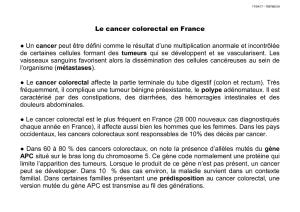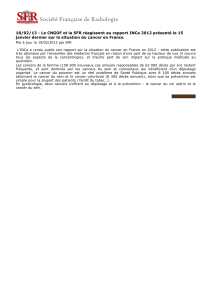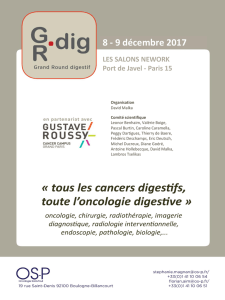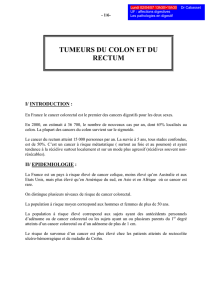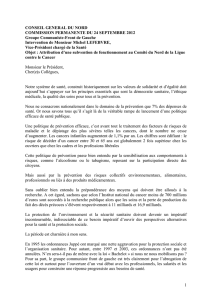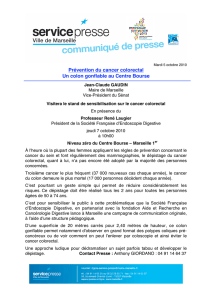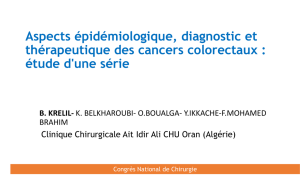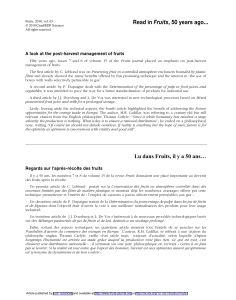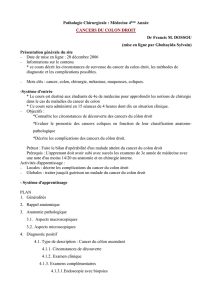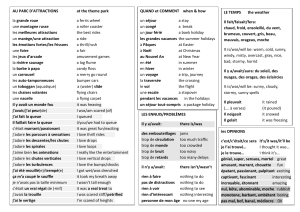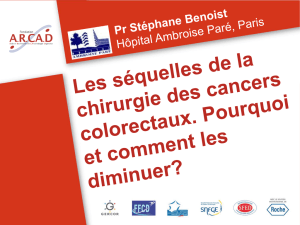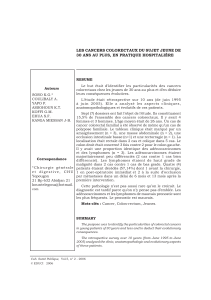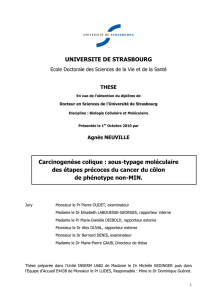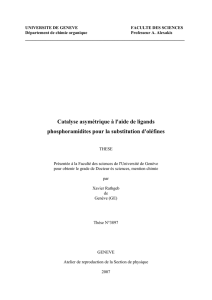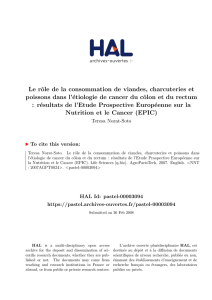LES CANCERS COLORECTAUX DU SUJET JEUNE DE
publicité
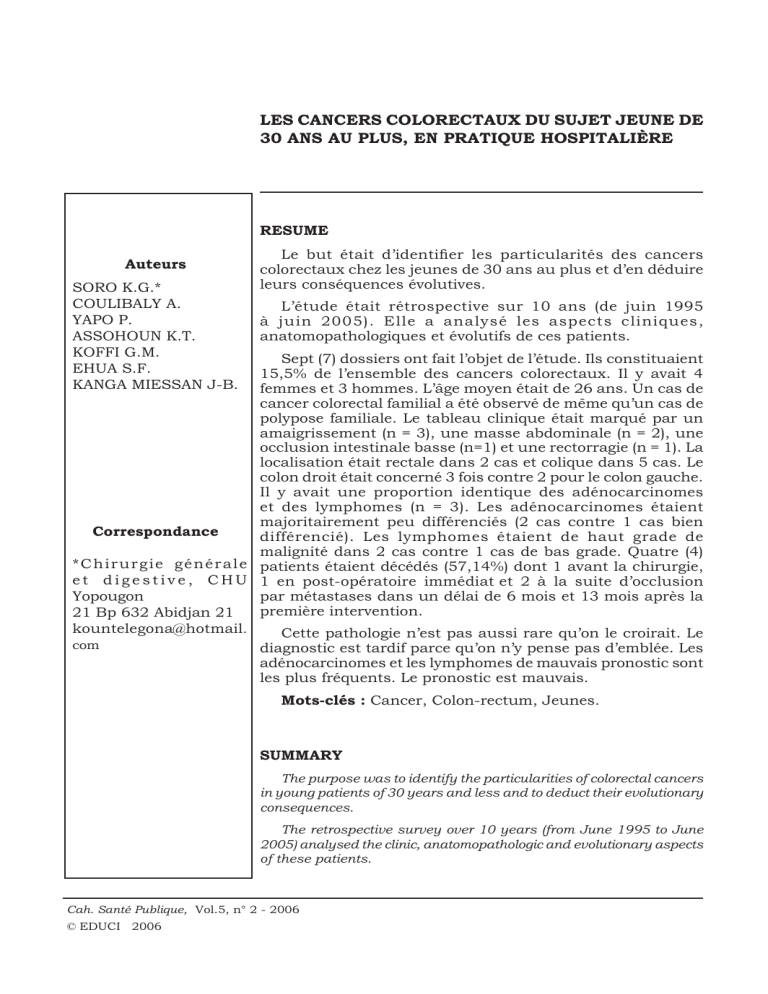
LES CANCERS COLORECTAUX DU SUJET JEUNE DE 30 ANS AU PLUS, EN PRATIQUE HOSPITALIÈRE RESUME Auteurs SORO K.G.* COULIBALY A. YAPO P. ASSOHOUN K.T. KOFFI G.M. EHUA S.F. KANGA MIESSAN J-B. Le but était d’identifier les particularités des cancers colorectaux chez les jeunes de 30 ans au plus et d’en déduire leurs conséquences évolutives. L’étude était rétrospective sur 10 ans (de juin 1995 à juin 2005). Elle a analysé les aspects cliniques, anatomopathologiques et évolutifs de ces patients. Sept (7) dossiers ont fait l’objet de l’étude. Ils constituaient 15,5% de l’ensemble des cancers colorectaux. Il y avait 4 femmes et 3 hommes. L’âge moyen était de 26 ans. Un cas de cancer colorectal familial a été observé de même qu’un cas de polypose familiale. Le tableau clinique était marqué par un amaigrissement (n = 3), une masse abdominale (n = 2), une occlusion intestinale basse (n=1) et une rectorragie (n = 1). La localisation était rectale dans 2 cas et colique dans 5 cas. Le colon droit était concerné 3 fois contre 2 pour le colon gauche. Il y avait une proportion identique des adénocarcinomes et des lymphomes (n = 3). Les adénocarcinomes étaient majoritairement peu différenciés (2 cas contre 1 cas bien Correspondance différencié). Les lymphomes étaient de haut grade de malignité dans 2 cas contre 1 cas de bas grade. Quatre (4) * C h i r u r g i e g é n é r a l e patients étaient décédés (57,14%) dont 1 avant la chirurgie, e t d i g e s t i v e , C H U 1 en post-opératoire immédiat et 2 à la suite d’occlusion par métastases dans un délai de 6 mois et 13 mois après la Yopougon première intervention. 21 Bp 632 Abidjan 21 kountelegona@hotmail. Cette pathologie n’est pas aussi rare qu’on le croirait. Le com diagnostic est tardif parce qu’on n’y pense pas d’emblée. Les adénocarcinomes et les lymphomes de mauvais pronostic sont les plus fréquents. Le pronostic est mauvais. Mots-clés : Cancer, Colon-rectum, Jeunes. SUMMARY The purpose was to identify the particularities of colorectal cancers in young patients of 30 years and less and to deduct their evolutionary consequences. The retrospective survey over 10 years (from June 1995 to June 2005) analysed the clinic, anatomopathologic and evolutionary aspects of these patients. Cah. Santé Publique, Vol.5, n° 2 - 2006 © EDUCI 2006 The study included the files of seven (7) patients, 15.5% of all colo-rectal cancers. There were 4 women and 3 men with a mean age of 26 years. A case of domestic colorectal cancer has been observed as well as a case of domestic polyposis. The clinical presentation was slim (n = 3), abdominal mass (n = 2), acute intestinal obstruction (n=1) and rectorragy (n = 1). The rectum was involved in 2 cases against 5 cases to the colon. The right side of the colon was concerned 3 times against 2 for the left colon. There was an identical proportion of adenocarcinoma and lymphoma (n = 3). Adenocarcinoma was majoritarely poor differentiated (2 cases against 1 well differentiated). The lymphoma was high rank of malignancy in 2 cases against 1 of low rank. The global mortality was 57.14% (n=4). One (1) patient deceased before the surgery. One (1) other patient deceased immediately after surgery. The 2 others deceased after a second look for metastasis acute intestinal obstruction in a delay of 6 months and 13 months after the first surgery. This pathology is not as rare as it had been believed. The diagnosis is belated because we don’t think about it straightaway. Worse prognosis of adenocarcinoma and lymphoma are the most common. The prognosis is very poor. Key words : Cancer, Colon - rectum, Young age. Cah. Santé Publique, Vol.5, n°2 - 2006 © EDUCI 2006 36
